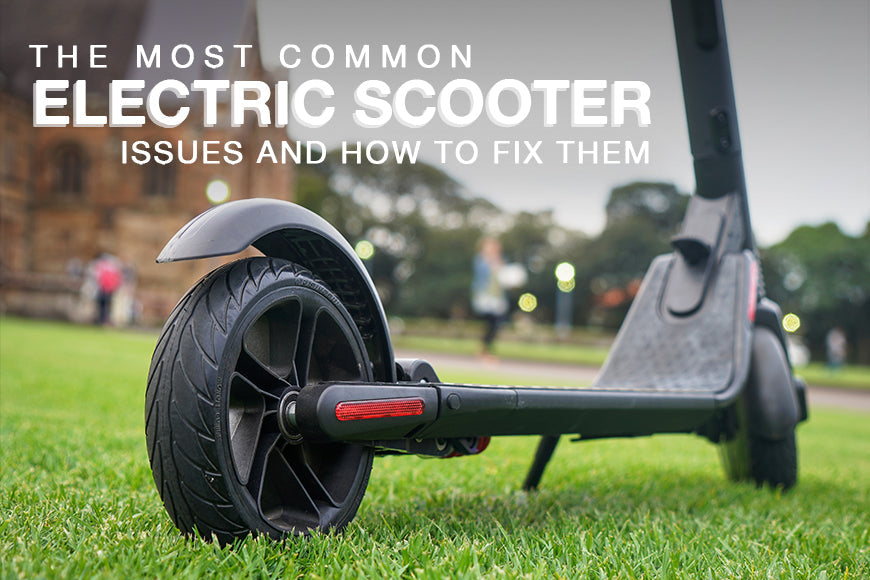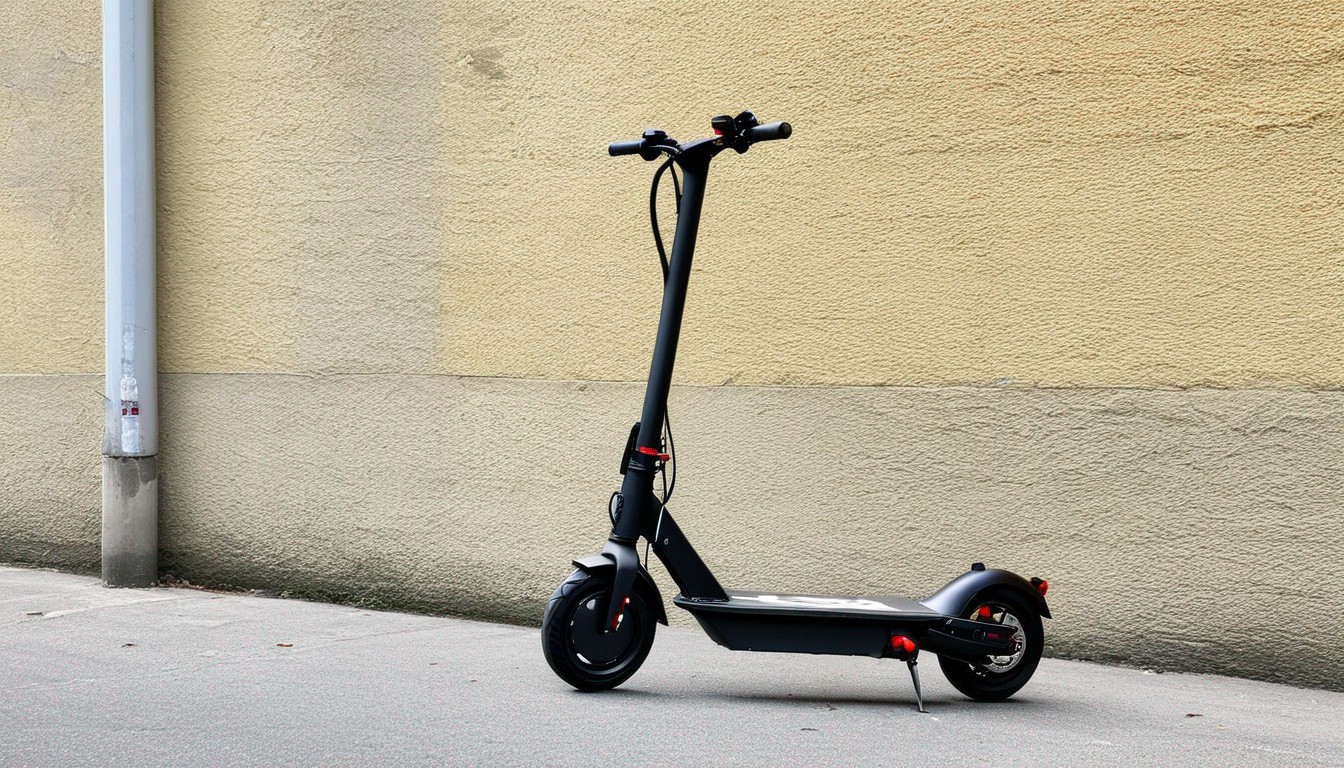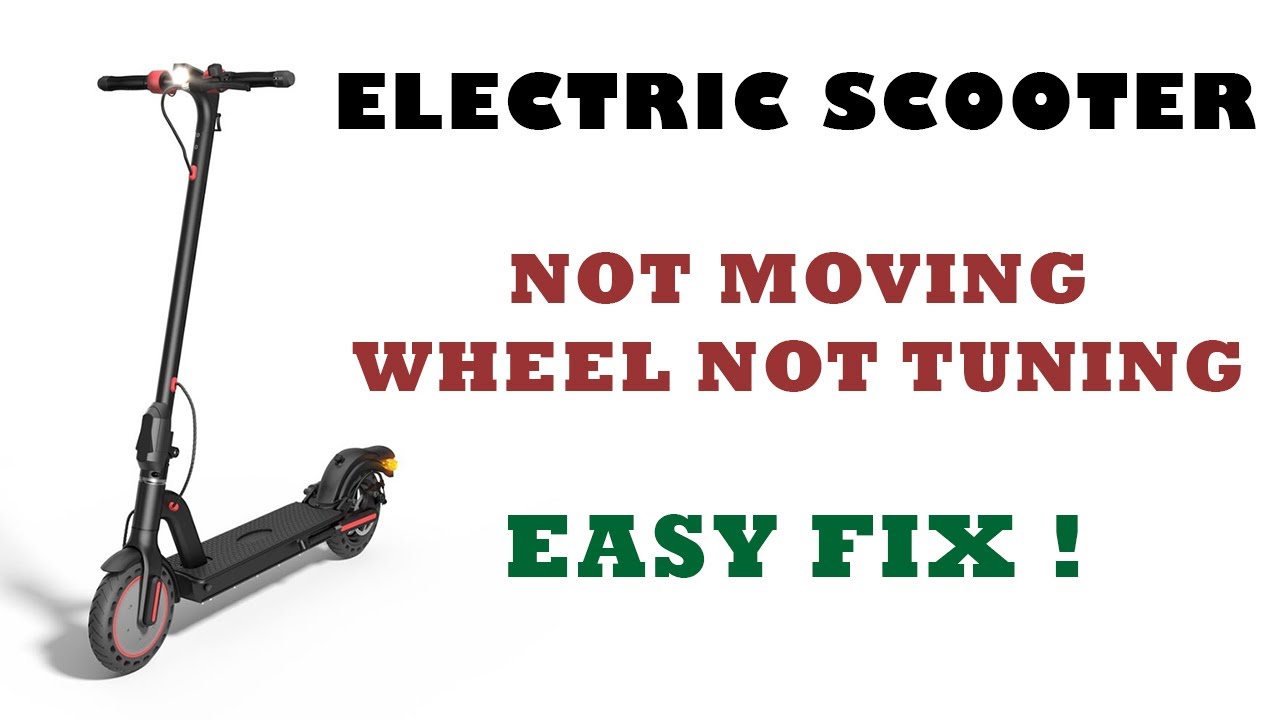Your electric scooter may turn on but not move due to a battery issue or a malfunctioning motor. Another cause could be a faulty throttle.
Electric scooters are popular for their convenience and eco-friendliness. However, they can sometimes encounter issues, such as turning on but not moving. Identifying the root cause is crucial for effective troubleshooting. Common problems include battery issues, motor malfunctions, or a faulty throttle.
Checking these components can help you diagnose and fix the issue, ensuring your scooter runs smoothly. Regular maintenance and timely repairs can extend the lifespan of your scooter. Understanding these basics can save you time and money, keeping your scooter in top condition.
Common Reasons For Non-movement
Your electric scooter turns on but doesn’t move. This can be frustrating. Several factors can cause this issue. Let’s explore some common reasons for non-movement.
Battery Issues
The battery powers your scooter. If it’s faulty, the scooter won’t move. Here are some common battery issues:
- Low Charge: A low battery charge can stop the scooter.
- Dead Battery: An old or dead battery needs replacement.
- Loose Connections: Check if the battery connections are loose.
Use a voltmeter to check the battery voltage. Ensure it matches the required levels.
Motor Malfunctions
The motor is crucial for movement. If the motor fails, the scooter won’t move. Here are some common motor issues:
- Burnt Motor: A burnt motor needs immediate replacement.
- Worn Brushes: Worn-out brushes can cause motor failure.
- Loose Wiring: Check if the motor wiring is loose.
Inspect the motor for any visible damage. Listen for unusual sounds during operation.

Credit: www.mearth.com.au
Battery Health
One common reason your electric scooter turns on but doesn’t move is the battery. The battery is the heart of your scooter. A weak or faulty battery can cause various issues. Let’s explore battery health in detail.
Checking Charge Levels
First, check the charge levels of your battery. Ensure the battery is fully charged. A low battery may not provide enough power. Use the charger that came with the scooter. Plug it into a power source. Connect the charger to your scooter’s battery port. Wait for the indicator light to turn green.
If the battery is still low, try a different outlet. Sometimes, the outlet may not be working. If the battery does not charge, it might be faulty. You can use a voltmeter to check the battery voltage. Compare the reading with the battery’s rated voltage. If the reading is low, the battery might need replacement.
Replacing The Battery
If the battery is faulty, replacing it is the best option. Make sure to buy a compatible battery. Check the scooter’s manual for the correct specifications. Here are the steps to replace the battery:
- Turn off the scooter and disconnect it from the charger.
- Locate the battery compartment. It is usually under the deck.
- Open the compartment using a screwdriver.
- Disconnect the old battery from the scooter’s wiring.
- Remove the old battery from the compartment.
- Place the new battery in the compartment.
- Connect the new battery to the scooter’s wiring.
- Close the compartment and secure it with screws.
- Turn on the scooter and check if it moves.
A new battery should resolve the issue if the old one was faulty. Always dispose of the old battery properly. Follow local guidelines for battery disposal.
Motor Functionality
The motor functionality of your electric scooter is crucial for its operation. If your scooter turns on but doesn’t move, the motor might be the issue. This section will guide you through inspecting and replacing the motor.
Inspecting The Motor
First, check if the motor is making any unusual noises. Strange sounds can indicate internal damage. Next, inspect the motor wiring. Loose or damaged wires may cause the motor to malfunction. Use a multimeter to test the motor’s electrical connections. Ensure the voltage readings match the specifications in the user manual.
| Inspection Step | Action |
|---|---|
| Check for Noises | Listen for unusual sounds from the motor. |
| Inspect Wiring | Look for loose or damaged wires. |
| Test Connections | Use a multimeter to check electrical connections. |
Motor Replacement
If the motor is damaged, you may need to replace it. Follow these steps to replace the motor:
- Remove the battery to ensure safety.
- Disconnect the motor wires carefully.
- Unscrew the motor from its mount.
- Install the new motor in the same position.
- Reconnect the wires securely.
- Reinstall the battery and test the scooter.
Replacing the motor can restore your scooter’s functionality. Ensure you use a compatible motor model. Always follow the manufacturer’s instructions during replacement.
Throttle Problems
If your electric scooter turns on but doesn’t move, throttle issues could be the culprit. Throttle problems can prevent your scooter from accelerating, even if the battery is full and the motor is functional. Let’s explore two common throttle issues: Throttle Calibration and Throttle Replacement.
Throttle Calibration
Sometimes, the throttle needs calibration to function correctly. Incorrect calibration can cause your scooter to stay idle. Follow these simple steps to calibrate the throttle:
- Turn off the scooter.
- Disconnect the throttle cable.
- Reconnect the throttle cable after a few seconds.
- Turn the scooter back on.
If the scooter still doesn’t move, then the issue might not be with the calibration.
Throttle Replacement
If calibration doesn’t work, you may need to replace the throttle. A faulty throttle can prevent the scooter from moving. Here are signs that indicate a replacement is needed:
- The throttle feels loose or unresponsive.
- There are visible signs of wear or damage.
- Calibration didn’t fix the problem.
To replace the throttle, follow these steps:
- Turn off the scooter and remove the key.
- Detach the old throttle by unscrewing it.
- Disconnect the wires carefully.
- Connect the new throttle’s wires.
- Screw the new throttle into place.
- Turn on the scooter to test the new throttle.
If the scooter still doesn’t move, then the problem might lie elsewhere.
Brake System Check
A common issue with electric scooters is they turn on but don’t move. This problem often relates to the brake system. Ensuring your brake system is in good shape is crucial. Below are steps to check and fix brake-related issues.
Brake Lever Inspection
First, inspect the brake lever. Make sure it moves smoothly. Stiff brake levers can cause your scooter to stay in a brake mode. This prevents the wheels from moving. Check if the lever is stuck or hard to press. If so, it may need lubrication or replacement.
Also, ensure the brake lever isn’t overly sensitive. A too-sensitive lever can falsely signal the scooter to engage the brake. Gently press and release the lever to test its response. This simple check can resolve many movement issues.
Brake Pad Adjustment
Next, examine the brake pads. These are crucial for stopping your scooter. Worn-out brake pads can drag against the wheel. This causes the scooter to slow down or stop. Visually inspect the brake pads for wear and tear.
If the brake pads are too close to the wheel, adjust them. Use the adjustment screws to set the right distance. Properly adjusted brake pads can prevent unnecessary friction. This ensures smooth movement of your electric scooter.
Here’s a quick guide to adjusting brake pads:
- Locate the adjustment screws near the brake pads.
- Turn the screws to move the pads away from the wheel.
- Test the scooter to ensure the wheel moves freely.
Regularly checking and adjusting the brake system keeps your scooter in top shape. It helps avoid issues where the scooter turns on but doesn’t move.

Credit: m.youtube.com
Controller Issues
One common reason your electric scooter turns on but doesn’t move is due to controller issues. The controller is the scooter’s brain, managing power flow from the battery to the motor. If it malfunctions, the scooter may power on but remain stationary.
Controller Reset
Sometimes, a simple controller reset can solve the problem. Follow these steps to reset your controller:
- Turn off the scooter.
- Disconnect the battery.
- Wait for 5-10 minutes.
- Reconnect the battery.
- Turn on the scooter.
This reset process can clear minor glitches. If the scooter still doesn’t move, the controller might need further inspection.
Controller Replacement
If resetting doesn’t help, you might need a controller replacement. Here’s how to replace the controller:
- Purchase a compatible controller.
- Turn off the scooter and disconnect the battery.
- Locate the controller box, usually near the battery.
- Disconnect the old controller’s wires.
- Connect the new controller’s wires.
- Secure the new controller in place.
- Reconnect the battery and turn on the scooter.
Replacing the controller requires some technical skills. If unsure, consult a professional technician. A new controller can restore your scooter’s functionality.
Wiring And Connections
Your electric scooter turns on but doesn’t move. The issue could be with the wiring and connections. These are crucial for your scooter’s operation. Faulty wiring can disrupt the power flow.
Loose Connections
Loose connections can stop your scooter from moving. Check all the cables. Make sure they are firmly plugged in. A loose connection can break the power circuit. Inspect the battery connectors. Ensure they are tight.
Damaged Wiring
Damaged wiring is another common problem. Look for frayed or broken wires. These can interrupt the electrical flow. Use a multimeter to test the wires. Replace any damaged ones immediately. Broken wires can be dangerous. They can cause short circuits.
| Issue | Effect | Solution |
|---|---|---|
| Loose Connections | Scooter won’t move | Re-plug and tighten all cables |
| Damaged Wiring | Interrupted power flow | Inspect and replace damaged wires |

Credit: www.scooterrentalhawaii.com
Professional Help
Electric scooters are a great way to move around. But sometimes, they have issues. If your electric scooter turns on but doesn’t move, you might need help. Professional help can solve tricky problems.
When To Seek Help
When should you seek help? Here are some signs:
- Battery Issues: Your scooter’s battery might be dead.
- Motor Problems: The motor could be damaged.
- Wiring Issues: Loose wires can cause problems.
- Controller Faults: The controller may be broken.
If you face these issues, it’s time to seek professional help. Experts can quickly spot and fix these problems.
Finding A Technician
How do you find a good technician? Here are some tips:
- Check Reviews: Read reviews online. Good reviews mean good service.
- Ask for Recommendations: Friends and family can suggest good technicians.
- Compare Prices: Get quotes from different technicians. Compare them.
- Check Certification: Ensure the technician is certified.
Certified technicians are trained to fix electric scooters. They have the right tools and knowledge. Finding a good technician saves you time and money.
For your electric scooter problems, professional help is the best option. It ensures your scooter gets back on the road quickly.
Frequently Asked Questions
Why Does My Electric Scooter Turn On But Won’t Accelerate?
Your electric scooter may not accelerate due to a faulty throttle, depleted battery, or motor issues. Check connections and battery charge.
Why Does My Scooter Start But Not Move?
Your scooter may start but not move due to a faulty transmission, broken drive belt, or clutch issues. Check these components.
Why Is My Electric Scooter Fully Charged But Not Working?
Your electric scooter might have a faulty battery, loose connections, or a malfunctioning motor. Check these components first.
Why Does My Scooter Start But No Power?
Your scooter might start but lack power due to a clogged air filter, dirty carburetor, or worn spark plug. Check and clean these components to restore performance.
Conclusion
Troubleshooting an electric scooter that turns on but doesn’t move can be challenging. Check the battery, motor, and connections. Regular maintenance can prevent many issues. Always consult the manual or a professional if problems persist. Understanding these basics ensures a smoother ride and longer scooter life.
Happy riding!

